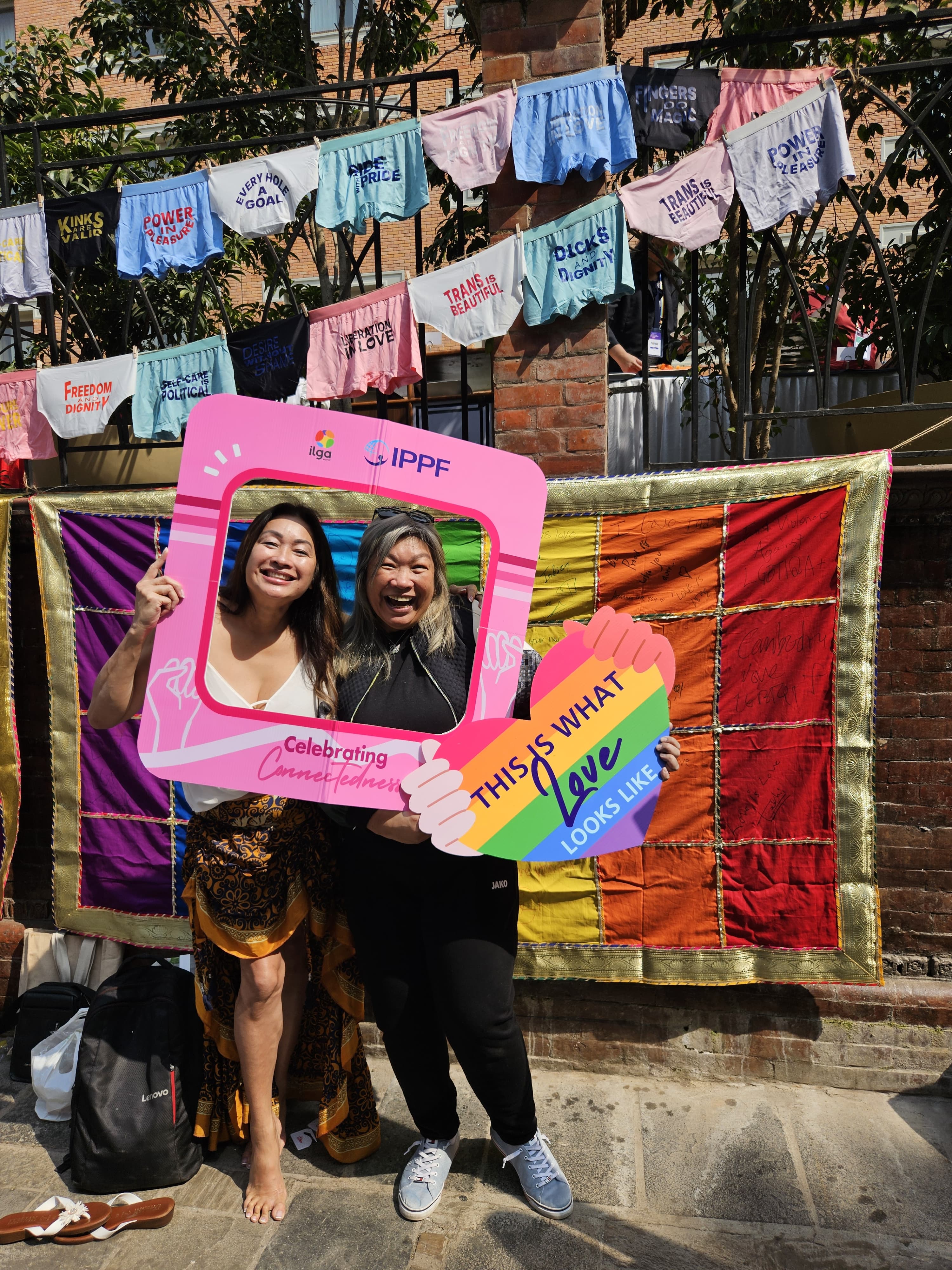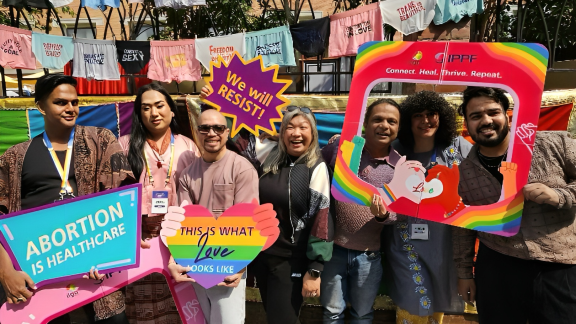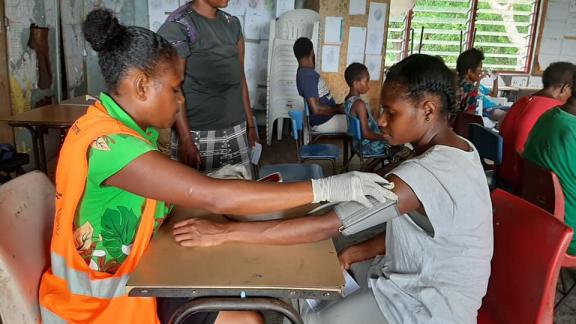As I reflect on my participation along with colleagues from ESEAOR and SARO at the International Lesbian, Gay, Bisexual, Trans and Intersex Association (ILGA) Asia Conference, I want to focus on my initial hesitation about attending, how discussions with my colleagues helped me find purpose, and the strategies we employed to make the most of the event.
Initially, I was skeptical about the value of attending such a large conference. These spaces often reflect colonial structures that need to be decolonized. Too often, key questions remain unchallenged to maintain the status quo. What are the roots of ILGA Asia, and whose interests does it serve? In what language is the conference conducted, and who sets its themes and advocacy priorities? Who can afford the high registration and travel costs? Ultimately, who gets to speak for the broader LGBTQIA+ community, especially given Asia's rich diversity of gender and sexual identities beyond the English-language framing of "LGBTQIA+"?
As my SARO colleague, Silvester Merchant, aptly put it during our discussions:
“In the end, what does this big event really mean for those at the lowest ranks of our society, those in the last mile?”
This question resonated with me. If the Conference was to be relevant to us, it must serve the most disenfranchised members of the LGBTIQA+ community.
when
region
East and South East Asia and Oceania, South Asia
Turning Challenges into Opportunities
I realized that, despite my reservations, we could use the Conference as a platform to amplify the voices of those often unheard in LGBTQIA+ spaces. Transgender, intersex, and lesbian/bi/queer individuals are particularly marginalized in advocacy spaces and this was an opportunity to center their voices.
Additionally, we saw the Conference as a space to "queer" and decolonize advocacy by promoting a cross-movement approach and building solidarity with feminist, HIV, and SRHR movements. The Kalavai Partnership was instrumental in supporting our participation, reinforcing the importance of coalition-building across rights-based movements.
With this framework guiding us, we devised a strategy. We would be intentional in collaborating with diverse community organizations and networks that represent the most overlooked groups to co-organize side events that foreground their SRHR and broader rights issues. For this, we collaborated on side event and program sessions on intersex issues with Intersex Asia; LGBTQIA+ people who use substances with Jejaka, Sisterhood Foundation, and HIV Buddies; LBQ individuals with Day/DM; and queer advocacy through art with ASEAN SOGIE Caucus.

The IPPF Asia Pacific team at ILGA Asia 2025, comprising Silvester Merchant and Abhishek Bageshwar from SARO, myself and Lady Lisondra from ESEAOR, embodied this movement convergence in a way, bringing together perspectives from SRHR, HIV, LGBTQIA+, and feminist movements and from our lived realities as members of vulnerable communities.

Through cross-movement collaborations, we positioned SRHR and justice at the center of discussions, highlighting how discrimination and structural inequalities prevent these communities from accessing their rights.

Art As Activism
One of the most impactful aspects of our participation was our work on queer art and cultural advocacy. With ASEAN SOGIE Caucus and the Queer Livelihoods Project, we successfully lobbied for art to have a central place at the conference.
Art has always been integral to the LGBTQIA+ movement, whether through pride flags, memorial quilts for HIV/AIDS victims, or visual representations of queer identities. However, as LGBTQIA+ advocacy spaces become more bureaucratic, the role of art is often sidelined. We wanted to change that.
Through our efforts, ILGA Asia 2025 featured a cultural reception and a dedicated art space showcasing 40+ artworks and films by queer artists across Asia. It also featured an interactive installation at the IPPF community center, where activists adorned South Asian reinterpretations of the rainbow flag with messages and drawings. This sent a strong message: art is not just complementary to activism; it is activism
Cross-Movement Solidarity and Fighting Opposition
We leveraged the Conference to push forward two critical themes: fighting opposition through movement-building and cross-movement collaboration as a strategy for advancing rights.
Lady Lisondra, Advocacy and Youth Advisor, played a lead role in coordinating several sessions on this topic, including a pre-conference workshop on how movement-building can counter anti-rights opposition, an interactive session on resisting anti-gender and anti-rights movements, and a program session on cross-constituency advocacy to promote inclusive SRHR.
The culmination of these efforts was a Unity Statement issued by a broad coalition of rights-based movements, directly confronting anti-democratic and anti-gender forces globally, including the influence of conservative actors like Trump.
Looking back: did we achieve our purpose?
In retrospect, I believe we stayed true to our original intention by prioritizing the most marginalized groups in the LGBTQIA+ movement and by strengthening cross-movement solidarity to advance SRHR in increasingly hostile environments.
But real success of our participation was not just attending the conference but the meaningful collaborations that emerged: the partnerships with community organizations that will continue beyond ILGA Asia 2025.
As my dear friend Silvi always asks: “What does this mean for those in the last mile?”
This question stays with me. It reminds me of postcolonial scholar Gayatri Chakravorty Spivak’s seminal question: “Can the subaltern speak?”

As long as colonial structures continue to dictate the language, format, and access to advocacy spaces, the voices of the most marginalized within the LGBTQIA+ movement will remain silenced. Our role is to disrupt these structures and to ensure that those at the periphery are heard, valued, and empowered.

About the Kalavai Partnership:
The Kalavai Partnership is co-convened by the International Planned Parenthood Federation (IPPF), Global Philanthropy Project (GPP), International Lesbian, Gay, Bisexual, Trans and Intersex Association (ILGA World), Funders Concerned About AIDS (FCAA) and the Association for Women’s Rights in Development (AWID). This partnership has emerged from years of political organizing and aims to address the intersecting challenges faced by marginalized communities in a growing anti-democratic environment.
As a cross-movement partnership, Kalavai brings together feminist, LGBTQI+, HIV, and SRHR organizations to combat the rollback of rights that threaten the dignity, safety, and health of women, girls, and individuals with non-normative genders and sexualities.











